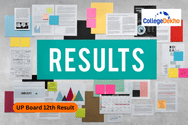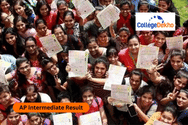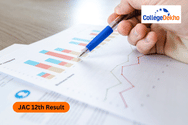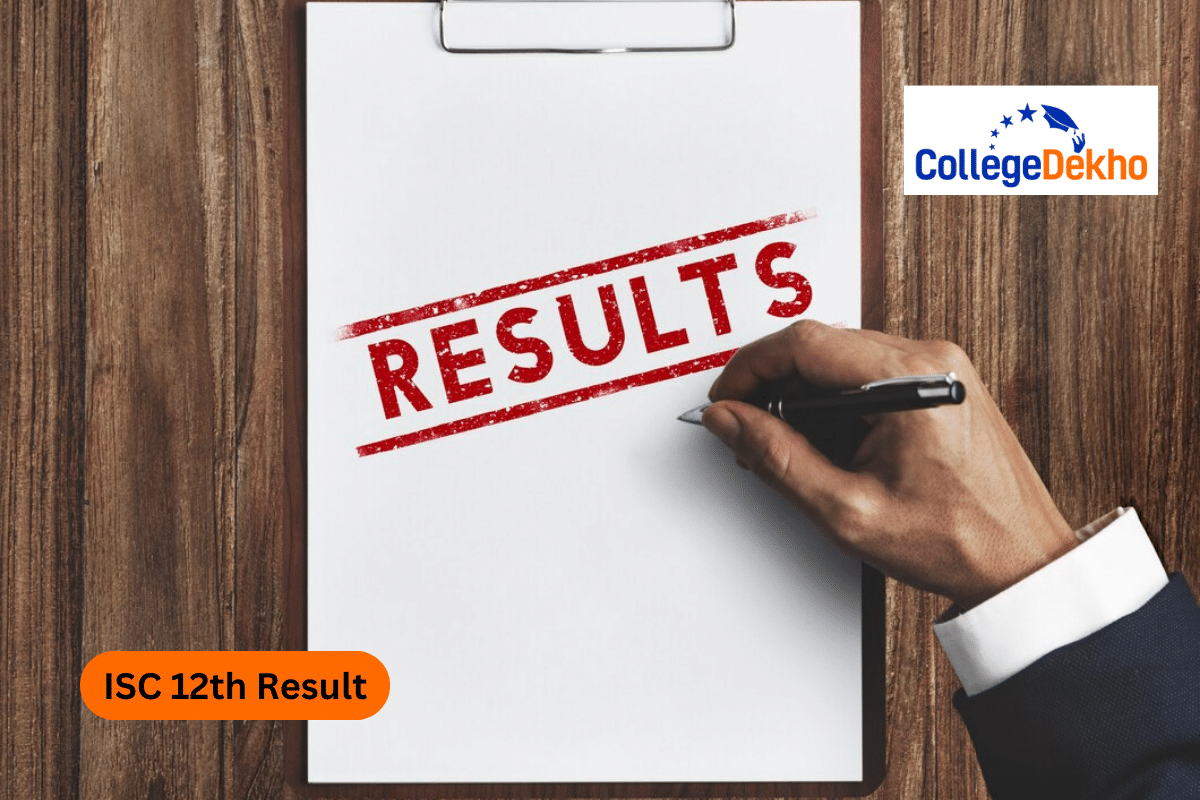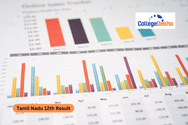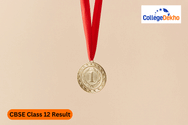HPBOSE 12th Exam Pattern 2025 HPBOSE 12th Exam Pattern 2025 includes theory, practical assessment, and internal assessment. The HPBOSE 12th exam will be held for 100 marks and in two sessions- morning and afternoon. Check out more details on the HPBOSE 12th marking scheme here.
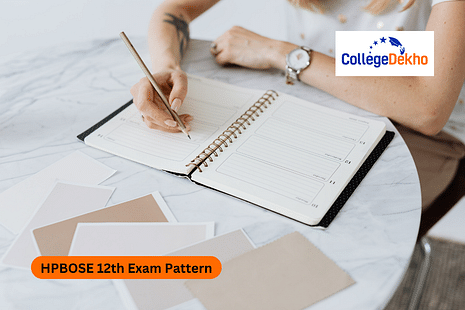

Never Miss an Exam Update
About HPBOSE 12th Exam Pattern 2025
The Himachal Pradesh Board of School Education has decided to retain the HPBOSE 12th Exam Pattern 2025 as it was in the previous year. No major modifications have been made to the exam pattern and marking scheme. Students will have to appear for 5 subjects in total, where there will be 2 language papers and 3 main subjects from the chosen stream. A maximum of 100 marks are provided for every subject included in the curriculum and these marks will be further divided into theory and practical exams. The science stream subjects like physics, biology, and chemistry will have 60 marks theory paper, 25 marks practical exam, and 15 marks internal assessments. The question paper will include MCQs, very short answer type questions, short answer type questions, and long answer type questions to be answered by the students. To revise the HP Board 12th Syllabus 2024-25 , students can use HP Board Class 12 Question Paper 2024-25 .
The HP Board 12th Date Sheet 2025 will be released in January 2025 tentatively, and the exams are expected to be held in March 2025. The HP Board 12th exam 2025 will be held in two sessions for regular, private and state open school students- morning and afternoon. The morning session will be conducted from 8:45 am to 12 pm for the regular students. The afternoon session will be held between 1:45 and 5 pm for open school candidates. Students will have to secure at least 33% marks in each subject and in aggregate marks to clear the exam. Check out more information about the HPBOSE 12th Exam Pattern 2025 here:
HPBOSE 12th Exam Pattern 2025: Highlights
HPBOSE has reverted to one single exam for this academic year. You can check some highlights of the HPBOSE 12th Exam Pattern 2025 here:
Particulars | Details |
|---|---|
Name of the exam | HP Board 12th (Plus Two) Exams 2025 |
Exam Conducting Body | Himachal Pradesh Board of School Education (HPBOSE) |
Official website | hpbose.org |
Exam dates | 13 March to 06 April 2025 (Tentative) |
Total duration | 3 hours and 15 minutes |
Result Date | May 2025 (Tentative) |
HPBOSE 12th Exam Pattern 2025
Students must have proper information about the exam pattern for the Himachal Pradesh class 12th board exams so that they can take the board exams without any problem. Check out some of the highlights related to the exam pattern from the pointers given below:
- The exams will be conducted in one single term as per the decision made by the Himachal Pradesh Board of School Education.
- The exam will be conducted in an offline manner.
- The duration of each exam will be 3 hours.
- 15 minutes will be provided to read the question paper.
| Subjects | Total marks | Theory Marks | Internal assessment/ practical exam |
|---|---|---|---|
| English | 100 | 80 | 20 |
| Hindi | 100 | 80 | 20 |
| Math | 100 | 80 | 20 |
| Physics | 100 | 60 | 25 + 15 (Internal assessment + practical exam) |
| Chemistry | 100 | 60 | 25 + 15 (Internal assessment + practical exam) |
| Biology | 100 | 60 | 25 + 15 (Internal assessment + practical exam) |
| Accountancy | 100 | 60 | 20 + 20 (Internal assessment + practical exam) |
| Business Studies | 100 | 80 | 20 |
| Economics | 100 | 80 | 20 |
| Geography | 100 | 60 | 20 + 20 (Internal assessment + practical exam) |
| History | 100 | 80 | 20 |
| Pol science | 100 | 80 | 20 |
| Home Science | 100 | 80 | 20 |
| Computer science | 100 | 60 | 20 + 20 (Internal assessment + practical exam) |
Also Read: HP Board Class 12 Previous Year Question Paper
HPBOSE 12th Exam Pattern 2025 Subject Wise
Students must have complete knowledge of the exam pattern for the various subjects included in the curriculum so that they can prepare for the board exams accordingly. Given below, we are sharing the exam pattern for some of the main subjects of the curriculum for the help of the students:
Accountancy
A total of 10 chapters are included in the curriculum in Accountancy. Check out the exam pattern regarding the same from the table given below:
Part | Chapter |
|---|---|
PART A: Accountancy Partnership Accounts | |
1. | Chapter 1: Accounting for Partnership - Basic Concepts |
2. | Chapter 2: Reconstitution of a Partnership Firm – Admission of a Partner |
3. | Chapter 3: Reconstitution of a Partnership Firm – Retirement/Death of a Partner |
4. | Chapter 4: Dissolution of Partnership Firm |
PART B: Company Accounts and Analysis of Financial Statements | |
5. | Chapter 1: Accounting for Share Capital |
6. | Chapter 2: Issue and Redemption of Debentures |
7. | Chapter 3: Financial Statements of a Company |
8. | Chapter 4: Analysis of Financial Statements |
9. | Chapter 5: Accounting Ratios |
10. | Chapter 6: Cash Flow Statement |
Business Studies
A total of 11 chapters are included in the syllabus for business studies which is also an important subject of the Commerce stream:
- PART A: PRINCIPLES AND FUNCTIONS OF MANAGEMENT
- 1. Nature and Significance of Management
- 2. Principles of Management
- 3. Business Environment -
- 4. Planning
- 5. Organizing
- 6. Staffing
- 7. Directing
- 8. Controlling
- PART B: Business Finance and Marketing
- 9. Financial Management
- 10. Marketing
- 11. Consumer Protecting
Economics
Students can refer to the names of the chapters included in the syllabus for Economics from the pointers given below:
Part | Chapter |
|---|---|
PART A: Introductory Micro Economics | |
1. | Chapter 1: Introduction |
2. | Chapter 2: Theory of Consumer Behaviour |
3. | Chapter 3: Production and Costs |
4. | Chapter 4: The Theory of the Firm under Perfect Competition |
5. | Chapter 5: Market Equilibrium |
PART B: Introductory Macro Economics | |
1. | Chapter 1: Introduction |
2. | Chapter 2: National Income Accounting |
3. | Chapter 3: Money and Banking |
4. | Chapter 4: Determination of Income and Employment |
5. | Chapter 5: Government Budget and the Economy |
6. | Chapter 6: Open Economy Macroeconomics |
Biology
The following chapters are included in the syllabus for Biology:
- REPRODUCTION
- Chapter 1: Sexual Reproduction in Flowering Plants
- Chapter 2: Human Reproduction
- Chapter 3: Reproductive Health
- GENETICS AND EVOLUTION
- Chapter 4: Principles of Inheritance and Variation
- Chapter 5: Molecular Basis of Inheritance
- Chapter 6: Evolution
- BIOLOGY IN HUMAN WELFARE
- Chapter 7: Human Health and Disease
- Chapter 8: Microbes in Human Welfare
- BIOTECHNOLOGY
- Chapter 9: Biotechnology: Principles and Processes
- Chapter 10: Biotechnology and its Applications
- Rationalised 2023-24
- ECOLOGY
- Chapter 11: Organisms and Populations
- Chapter 12: Ecosystem
- Chapter 13: Biodiversity and Conservation
- Two experiments
- Slide preparation
- Spotting
- Investigatory project and viva based on the project
- Record and Viva based on the experiment
Chemistry
A total of 10 chapters are included in the curriculum for Chemistry such as:
Unit No. | Title |
|---|---|
Chapter I | Solutions |
Chapter II | Electrochemistry |
Chapter III | Chemical Kinetics |
Chapter IV | d- and f-Block Elements |
Chapter V | Coordination Compounds |
Chapter VI | Haloalkanes and Haloarenes |
Chapter VII | Alcohols, Phenols and Ethers |
Chapter VIII | Aldehydes, Ketones and Carboxylic Acids |
Chapter IX | Amines |
Chapter X | Biomolecules |
Practical Work (15 marks)
| Topics | Practical works |
|---|---|
| A. Surface Chemistry |
(a) Preparation of one lyophilic and one lyophobic sol. Lyophilic sol-Starch, egg albumin and gum. Lyophobic sol-aluminum hydroxide, ferric hydroxide, arsensious sulphide.
(b) Study of the role of emulsifying agent in stabilizing the emulsions of different oils. |
| B. Chemical Kinetics |
(a) Effect of concentration and temperature on the rate of reaction between sodium thiosulphate and hydrochloric acid.
(b) Study of reaction rates of any one of the following: (i) Reaction of iodide ion and with hydrogen peroxide at room temperature using different concentration of iodide ions. (ii) Reaction between potassium iodate, KIO3 and sodium sulphite : (Na2 SO3) using starch solution as indicator (clock reaction). |
| C. Thermochemistry | (a) Any one of the following experiments: (i) Enthalpy of dissolution of copper sulphate or potassium nitrate. (ii) (iii) Enthalpy of neutralization of strong acid (HCl) and strong base (NaOH) Determination of enthalphy change during interaction (Hydrogen bond formation) between acetone and chloroform. |
| D. Electochemistry | Variation of cell potential in Zn/Zn2+ǁCu2+/Cu with change in concentration of electrolytes (CuSO4 or ZnSO4) at room temperature. |
| E. Chromatography |
(i) Separation of pigments from extracts of leaves and flowers by pap chromatography and determination of Rf values.
(ii) Separation of constituents present in an inorganic mixture containing cations only (constituents having wide difference in Rf values to be provided) |
| F. Preparation of Inorganic Compounds | (i) Preparation of double salt of ferrous ammonium sulphate or potash alum. (ii) Preparation of potassium ferric oxalate. |
| G. Preparation of Organic Compounds |
Preparation of any two of the following compounds
|
| H. Test for the functional groups present in organic compounds: | Unsaturation, alcoholic, phenolic, aldehydic, ketonic, carboxylic and amino (primary groups) I. Study of Carbohydrates, fats and proteins in pure form and detection of their presence in given food stuffs. J. Determination of concentration/molarity of KMnO4 solution by titrating it against a standard solution of : (i) Oxalic acid (ii) Ferrous ammonium sulphate. (Students will be required to prepare standard solutions by weighing themselves) |
| K. Qualitative analysis | Determination of one cation and one anion in a given salt Cations- Pb2+, Cu2+,As3+, Al3+, Fe3+, Mn2+, Zn2+, Co2+, Ni2+, Ca2+, Sr2+, Ba2+, Mg2+, NH4+ Anions- CO3 2-, S2-, SO3 2-, SO4 2-, NO2, NO3, Cl-, Br-, I-, PO4 3-; C2O4 2-, CH3COO- |
Physics
14 chapters are included in the syllabus for Physics. Check out the information regarding the same from the table given below:
Chapter No. | Title |
|---|---|
Chapter 1 | Electric Charges and Fields |
Chapter 2 | Electrostatic Potential and Capacitance |
Chapter 3 | Current Electricity |
Chapter 4 | Moving Charges and Magnetism |
Chapter 5 | Magnetism and Matter |
Chapter 6 | Electromagnetic Induction |
Chapter 7 | Alternating Current |
Chapter 8 | Electromagnetic Waves |
Chapter 9 | Ray Optics and Optical Instruments |
Chapter 10 | Wave Optics |
Chapter 11 | Dual Nature of Radiation and Matter |
Chapter 12 | Atoms |
Chapter 13 | Nuclei |
Chapter 14 | Semiconductor Electronics: Materials, Devices, and Simple Circuits |
Practical Works (15 marks)
The evaluation scheme for the Practical Examination is as follows:
- One experiment from any one Section
- Two activities (One from each section)
- Practical record (experiments & activities)
- Record of demonstration experiments & Viva based on these experiments
- Viva on experiments and activities
Mathematics
13 chapters are included in the syllabus for Mathematics. Check out the list of chapters from the table given below:
- Relations and Functions
- Inverse Trigonometric Functions
- Matrices
- Determinants
- Continuity and Differentiability
- Application of Derivatives
- Integrals
- Application of Integrals
- Differential Equations
- Vector Algebra
- Three Dimensional Geometry
- Linear Programming
- Probability
English
Two textbooks are prescribed for English. Students can refer to the syllabus for both books from the table given below:
Section | Author |
|---|---|
Flamingo Textbook | |
1. The Last Lesson | Alphonse Daudet |
2. Lost Spring | Anees Jung |
3. Deep Water | William Douglas |
4. The Rattrap | Selma Lagerlöf |
5. Indigo | Louis Fischer |
6. Poets and Pancakes | Asokamitran |
7. The Interview Part 1 | Christopher Silvester |
Part 2 | Umberto Eco |
8. Going Places | A.R. Barton |
Poetry | |
1. My Mother At Sixty-Six | Kamala Das |
2. Keeping Quiet | Pablo Neruda |
3. A Thing of Beauty | John Keats |
4. A Roadside Stand | Robert Frost |
5. Aunt Jennifer’s Tigers | Adrienne Rich |
Vistas (Supplementary Reader) | |
1. The Third Level | Jack Finney |
2. The Tiger King | Kalki |
3. Journey to the End of the Earth | Tishani Doshi |
4. The Enemy | Pearl S. Buck |
5. On the Face of It | Susan Hill |
6. Memories of Childhood | |
- The Cutting of My Long Hair | Zitkala-Sa |
- We Too are Human Beings | Bama |
Computer Science
The sections and topics that are included in the HP Board Class 12 Computer Science syllabus 2025 are listed below:| Units | Unit Name |
|---|---|
| Unit I | Network Operating System |
| Unit II | Network Operating System Administration (Configuration & Maintenance) |
| Unit III | Desktop Publishing (Advanced) |
| Unit IV | Elementary Server side Scripting through PHP |
| Unit V | RDBMS Concepts and MYSQL |
| Unit VI | PL/SQL |
| Unit VII | Internet Business Applications |
| Unit VIII | Project Work |
Geography
There are two books included in the syllabus for geography. Check the syllabus here:
Part | Unit | Chapter |
|---|---|---|
A. Fundamentals of Human Geography | UNIT I | Chapter 1: Human Geography Nature and Scope |
UNIT II | Chapter 2: The World Population Distribution, Density and Growth | |
Chapter 3: Human Development | ||
UNIT III | Chapter 4: Primary Activities | |
Chapter 5: Secondary Activities | ||
Chapter 6: Tertiary and Quaternary Activities | ||
Chapter 7: Transport and Communication | ||
Chapter 8: International Trade | ||
B. Indian: People and Economy | UNIT I | Chapter 1: Population: Distribution, Density, Growth and Composition |
UNIT II | Chapter 2: Human Settlements | |
UNIT III | Chapter 3: Land Resources and Agriculture | |
Chapter 4: Water Resources | ||
Chapter 5: Mineral and Energy Resources | ||
Chapter 6: Planning and Sustainable Development in Indian Context | ||
UNIT IV | Chapter 7: Transport and Communication | |
Chapter 8: International Trade | ||
UNIT V | Chapter 9: Geographical Perspective on Selected Issues and Problems |
Practical Work ( 20 Marks)
- Chapter-1 Data – Its Source and Compilation
- Chapter-2 Data Processing
- Chapter-3 Graphical Representation of Data
- Chapter-4 Spatial Information Technology
History
12 chapters are included in the curriculum for History. Check the information about the same from the list given below:
- 1. Bricks, Beads and Bones (The Harappan Civilisation)
- 2. Kings, Farmers, and Towns (Early State and Economies)
- 3. Kinship, Caste and Class (Early Societies)
- 4. Thinkers, Beliefs and Buildings (Cultural Developments)
- 5. Through The Eyes of Travellers ( Perceptions of Society)
- 6. Bhakti-Sufi Traditions (Changes in Religious Beliefs and Devotional Texts)
- 7. An Imperial Capital (Vijayanagara)
- 8. Peasants, Zamindars, and The State (Agrarian Society and the Mughal Empire)
- 09. Colonialism and The Countryside (Exploring Official Archives)
- 10. Rebels and The Raj (1857 Revolt and its Representations)
- 11. Mahatma Gandhi and The Nationalist Movement (Civil Disobedience and Beyond)
- 12. Framing The Constitution ( The Beginning of a New Era)
Political Science
The following chapters are included in the curriculum for Political Science:
- PART A: POLITICS IN INDIA SINCE INDEPENDENCE 40
- Chapter 1: Challenges of nation building
- Chapter 2: Era of one-party dominance
- Chapter 3: Politics of planned development
- Chapter 4: India’s external relations
- Chapter 5: Challenges to and restoration of the congress system
- Chapter 6: The crisis of democratic order
- Chapter 7: Regional Aspirations
- Chapter 8: Recent Developments in Indian Politics
- PART B: CONTEMPORARY WORLD-POLITICS
- Chapter 1: The End of Bipolarity
- Chapter 2: Contemporary Centres of Power
- Chapter 3: Contemporary South Asia
- Chapter 4: International Organisations
- Chapter 5: Security in the Contemporary World
- Chapter 6: Environment and Natural Resources
- Chapter 7: Globalisation
HPBOSE 12th Grading System 2025
The HP Board class 12 grading system 2025 is a 9 scale grading system that ranges from A1 to E2. Here the grade A1 is the highest grade that is given when the students score between 91-100, and the lowest grade is E2. To pass the HPBOSE 12th exam 2025, it is mandatory to score a “D” grade on each paper and an aggregate score. The detailed HP Board class 12 grading system 2025 is tabulated below:
Range of Marks | Grade Points | Grades |
|---|---|---|
91-100 | 100 | A1 |
81-90 | 90 | A2 |
71-80 | 80 | B1 |
61-70 | 70 | B2 |
51-60 | 60 | C1 |
41-50 | 50 | C2 |
33-40 | 40 | D |
21-32 | C | E1 |
00-20 | C | E2 |
HPBOSE 12th Passing Marks 2025
Students are required to score 33% marks to successfully pass the board exams. Check out the details related to the passing marks from the table given below:
Theory
Subjects | Maximum marks | Passing marks |
|---|---|---|
Physics | 60 | 20 |
Chemistry | 60 | 20 |
Math | 80 | 26 |
Biology | 60 | 20 |
Account | 80 | 26 |
Business studies | 80 | 26 |
Economics | 80 | 26 |
History | 80 | 26 |
Political science | 80 | 26 |
Sociology | 80 | 26 |
English | 80 | 26 |
Practical and Internal Assessment
Subjects | Practical Total marks | Internal assessment/Practical passing marks |
|---|---|---|
Physics | 25 + 15 (CCE) | 09 + 05 (CCE) |
Chemistry | 25 + 15 (CCE) | 09 + 05 (CCE) |
Math | 20 | 07 |
Biology | 25 + 15 (CCE) | 09 + 05 (CCE) |
Account | 20 | 07 |
Business studies | 20 | 07 |
Economic | 20 | 07 |
History | 20 | 07 |
Political science | 20 | 07 |
Sociology | 20 | 07 |
English | 20 | 07 |
HPBOSE 12th Best Books 2025
Students are advised to follow the NCERT Books and those which are recommended by the state board. Apart from these, they can refer to other important refernce books which are:- Flamingo, Kaleidoscope, and Vistas
- Gurukul By Oswal HPBOSE English Last 10 Years Solved Papers
- Self Master Mathematics Class 12 (H.P. Board) - Written by A.Br. Singh and published by Dinesh publication
- Gurukul By Oswal HPBOSE Mathematics Last 10 Years Solved Papers
- Gurukul By Oswal HPBOSE Physics Last 10 Years Solved Papers for HP Board Class 12 Exam 2025
- Gurukul By Oswal HPBOSE Chemistry Last 10 Years Solved Papers for HP Board Class 12 Exam 2025
- Gurukul By Oswal HPBOSE Biology Last 10 Years Solved Papers for HP Board Class 12 Exam 2025
- Accountancy book for Part A Accountancy book for Part B - Published by N.C.E.R.T. New Delhi
Students can refer to the detailed HPBOSE 12th Exam Pattern 2025 mentioned above to efficiently prepare for the board exam. Make sure to also practice using sample papers available on the official website to check the structure of the question paper that will be presented during the board exams.
FAQs
To pass the HPBOSE 12th Board 2025, students must receive at least 33% in each subject and a total of 33% in all subjects. Those who don't meet the requirements for passing have to appear for the compartment exams.
The exam duration for the theory paper is 3 hours as per the HPBOSE 12th Exam Pattern 2025. 15 minutes will be provided to read the question paper.
Was this article helpful?





